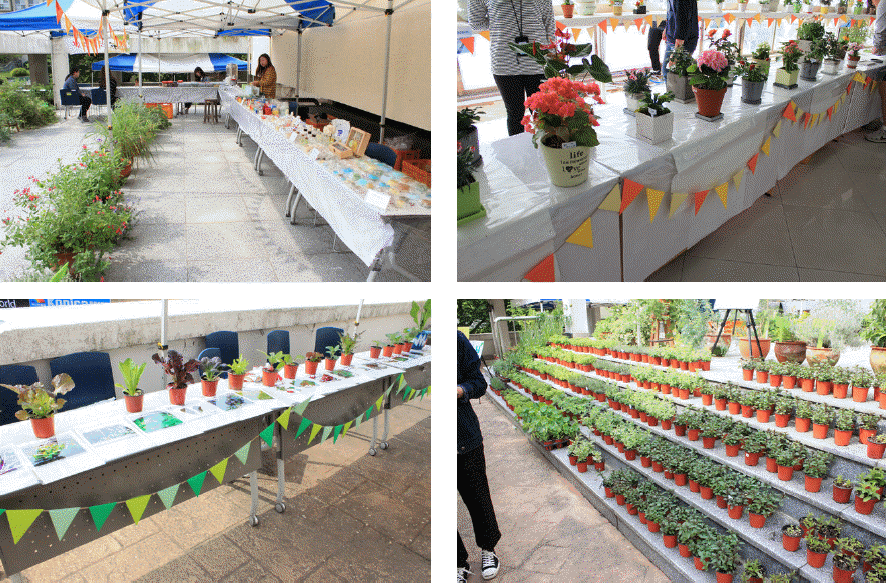Ahn HK. Event analysis and development strategy in Korea Agriculture Expo. PhD Diss. 2014. Mokpo National Univ; Mokpo, Korea.
Ahn HG, Yoo YK. The appraisal and analysis of visitors' program satisfaction in Korea Agriculture Exposition. J. Kor. Soc. People Plants and Environ 2016;19(2): 149–156.

Cheng Yan. An analysis of effect relationship among experience factors, exhibition image, satisfactory and recommendation intention. J. Tour. Manage. Res 2013;17(3): 427–446.
Choi SH, Jeon IO. Impact of physical environment of exhibition on the experiences and visitors' satisfaction. J. Kor. Contents Associ 2012;12(11): 313–337.

Geum SG. Topic urban agriculture of green growth. BDI Policy Focus 2010;74:1–12.
Han EJ, Noh JH. Determinants of demand for exhibition visitors - focusing on visitors of the “Seoul International Wine & Spirits EXPO”-. Tourism Study 2012;27(1): 397–413.
Han JH, Chang DM. A study on the sustainable development direction through theory, paradigm and typology of urban agriculture. J. Urban Des. Inst. Kor 2014;15(6): 33–46.
Heo JN, Kim TG. Valuation and preference of urban agriculture park using choice experiment. Kor. J. Organic Agri 2013;21(2): 125–137.

Hong JH. A comparative study of first-time visitors and repeated visitors to local festival: focused on Gwangalli Eobong Festival. Event & Convention Research 2009;5(2): 23–35.
Hwang JI, Jang YJ, Jang BG. Segmentation and preference analysis of urban farming patterns. Kor. J. Community Living Sci 2013;24(4): 553–565.

Jang YL. A comparative study of local festival motivation, satisfaction estimate, behavioral intention and local culture perception: the case of first time visitor and repeated visitor. J. Tourism Manage. Res 2007;11(1): 167–191.
Jeong BD, Kim MH. The effect of satisfaction with service quality in regional festivals on revisit and word-of mouth intention. Rev. Business & Economy 2010;23(1): 505–522.
Jeong GH, Roh YH, Lee SH. Cultural festival with maple: the case of Jangsung Bakyang Maple Festival. J. Korean Soc. People Plants Environ 2008;11(1): 35–44.
Jung YH. Effects of the perceived value of convention & exhibition visitors on their satisfaction, revisit and recommendation intention. J. Kor. Contents Associ 2011;11(11): 145–155.
Kim NS. Impacts of exhibition service quality on participants' satisfaction and intention to visit again. Korea Trade Review 2008;33(3): 123–157.
Kim SB, Moon HS. A way to make a eco-campus in a point of view of landscape architecture - the case of Keimyung Univ. (Seongseo Campus) in Daegu, Korea. Keimyung Korean Studies Journal 2008;36:139–169.
Kwon EW, Park WJ. The Effect of experiential marketing operation on exhibition satisfaction and behavioral intention. Event & Convention Res 2012;8(2): 23–40.
Lee JM, Jee JH. Impact of image of regional festival on satisfaction of tourists and their intention for revisit-with focus on Firefly Festival of Youngyang. J. Kor. Contents Associ 2008;8(12): 424–432.

Lee JM. Impact of sense of satisfaction with regional festival experience program upon intention for re-visit - with focus on Andong International Mask Dance Festival. J. Kor. Contents Associ 2009;9(9): 370–379.
Lee KH. Correlation analysis between viewing satisfaction and visitor’s behavior in art museum, PhD Diss. 2009. Hongik Univ; Seoul, Korea.
Min JH, Ha KS. Ecosystem configuration and its structure of cultural contents - focused on Busan International Motor Show. J. Kor. Contents Associ 2010;10(10): 197–208.

Park HJ, Park JH, Lee JS, Kim YH, Yoon JH. A Study on the tourist’s perceived quality, experience value, satisfaction and revisit: focused on exhibition. J. Tour. Leisure Res 2012;24(5): 7–25.
Shin H S, Jeon Y C. The effect that visitor’s emotional response for exhibition contents of local festivals has on satisfaction and continuous relationship in the festival. J. Tour. Manage. Res 2013;17(2): 147–163.
Yeo SH, Oh IK. Impact of tour expo visitors' participation motivations, perceived constraints and perceived facilitators on intention to revisit. J. Tour. Leisure Res 2004;16(2): 235–251.









